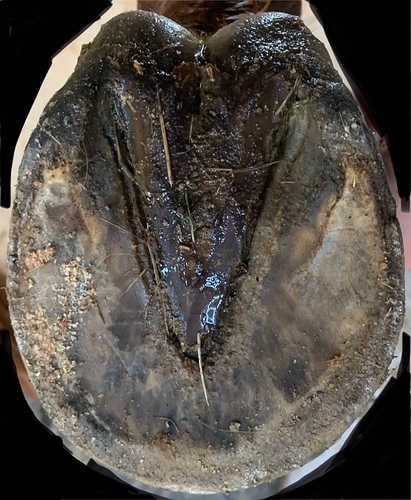How long has this farrier been trimming him?
The hinds are negative (RH) and flat (LH) NPA, which is almost always a trimming issue, and nearly always takes months, like full growth cycle-ish.
The LF has slight rotation, the RF doesn’t. You can tell because the LF has a widening distance between the face of P3, and the face of the hoof wall, as you go top to bottom. The RF is pretty darn equal top to bottom.
That said - what’s the deal with the 2 different LF rads? They almost look like they were taking with 2 different machines, or 2 different settings, or something. The 2nd one (3rd pic) shows a lot less deviation from the hoof wall, than the first pic does
It’s really unfortunate your vet didn’t mark the coronet band (though thankfully we can see it), and the true apex of the frog, to really see if there’s any sinking (I don’t think so, if any, maybe a tiny bit), and sole depth. Did the vet measure sole depth at all somehow?

